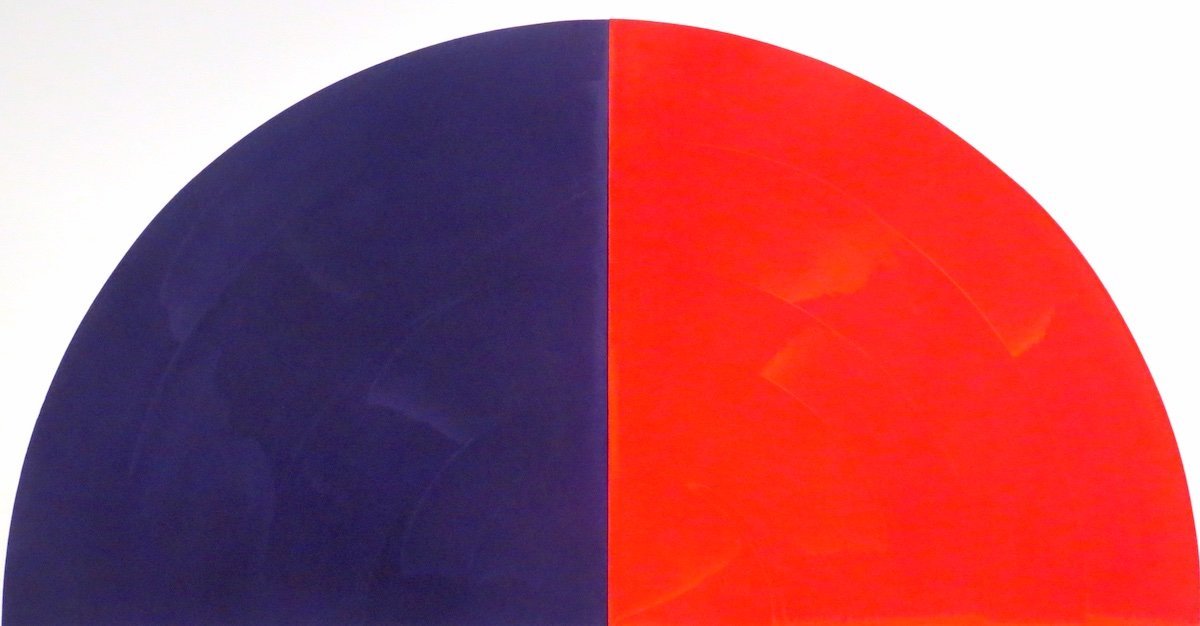
(The Artist’s Room)
"Precarious Existence" is a joint exhibition by two artists whose disparate styles nonetheless mesh together appealingly.
Jane Siddall’s impressive animal studies are created with two different media — wildly colourful pencil work, and more gentle, muted acrylic. Near-mirror symmetry plays a role in several of her works, notably the fantasy shelter of the two foxes in "Safe Haven". The wildlife of Africa and the Subcontinent is a major subject of the artist’s images, with elephants and leopards inhabiting magic realist worlds of fabric and wallpaper patterns.
Where Siddall’s works are almost wilful in their kaleidoscope of colour, Rob Foote’s work largely takes the opposite tack. Foote’s pictures are quiet surrealist works of unbalanced structures and realms created in a soft sepia-toned charcoal. Humour is very much to the fore in several of the pieces, most obviously in Pac-Man-Hat-Tan and in the wry reworking of a famous image of 1920s construction workers, Angry Bird’s Eye View.
The two series of works gain connection through a small series of paintings of brightly coloured insects by Foote in acrylic on wallpaper.
The vibrancy of these works and the patterned backgrounds tie in perfectly with Siddall’s vivid animal scenes.

(Milford Gallery)
Yuki Kihara’s exploration of personal and colonial history extends in "Presence in Absence" with a series of lenticular images indicating the passage from the past to the future.
In the works, we see Kihara’s Victorian-era alter-ego, Salome, as she passes through a changing world. We sense her navigation through space and time, and become aware of the changes not only in her existence but also in our own, as well as the ephemeral nature of the individual lifetime.
The clever use of lenticular photographs, which shift and shimmer between images as the viewer moves around them, allows us to be aware of this motion through the plane of earthly existence.
The photography is excellent and the works are beautifully presented.
The figures and trees move within the picture frame, growing and developing as time passes. We sense the presence and the absence as morning turns through afternoon to evening in the scenes.
The central work in the display, a single panoramic photograph, brings suggestions of the journey of societies through time. Kihara’s Pacific Island heritage is hinted at in props such as the ’ava bowl and the Bible, representative of the traditional and colonial influences which have shaped Pacific society.

(Dunedin Public Art Gallery)
There are times when representation cannot express the intangible or the ineffable. It is at times like these the power of abstract art comes to the fore.
In "Fault Lines", the Dunedin Public Art Gallery presents work by several top New Zealand abstractionists whose work has not only confounded expectation but has challenged the very nature of the art object and its relationship with the gallery space.
From Julian Dashper and Oliver Perkins’ questioning of the nature of the framed image, to the soul-deep hurt of Ralph Hotere’s lament for the lost land of Port Chalmers’ Observation Point, we are presented with works which require thought on the part of the viewer.
These are not easy pieces, but they are worthwhile.
Perhaps the most accessible work is the gestural sweep of Gretchen Albrecht’s Cardinal, its hemisphere divided into two vibrating fields of colour.
The artist’s message, of the passage of life, death, and rebirthas told from a Christian perspective, may not be readily evident to a casual glance, but the sheer power of the colour makes this a hypnotic piece.
While work by Don Driver and Don Peebles may not have the immediacy of Albrecht’s colours, their playful use of found objects within their constructions produces work that delights as it confounds.
By James Dignan










